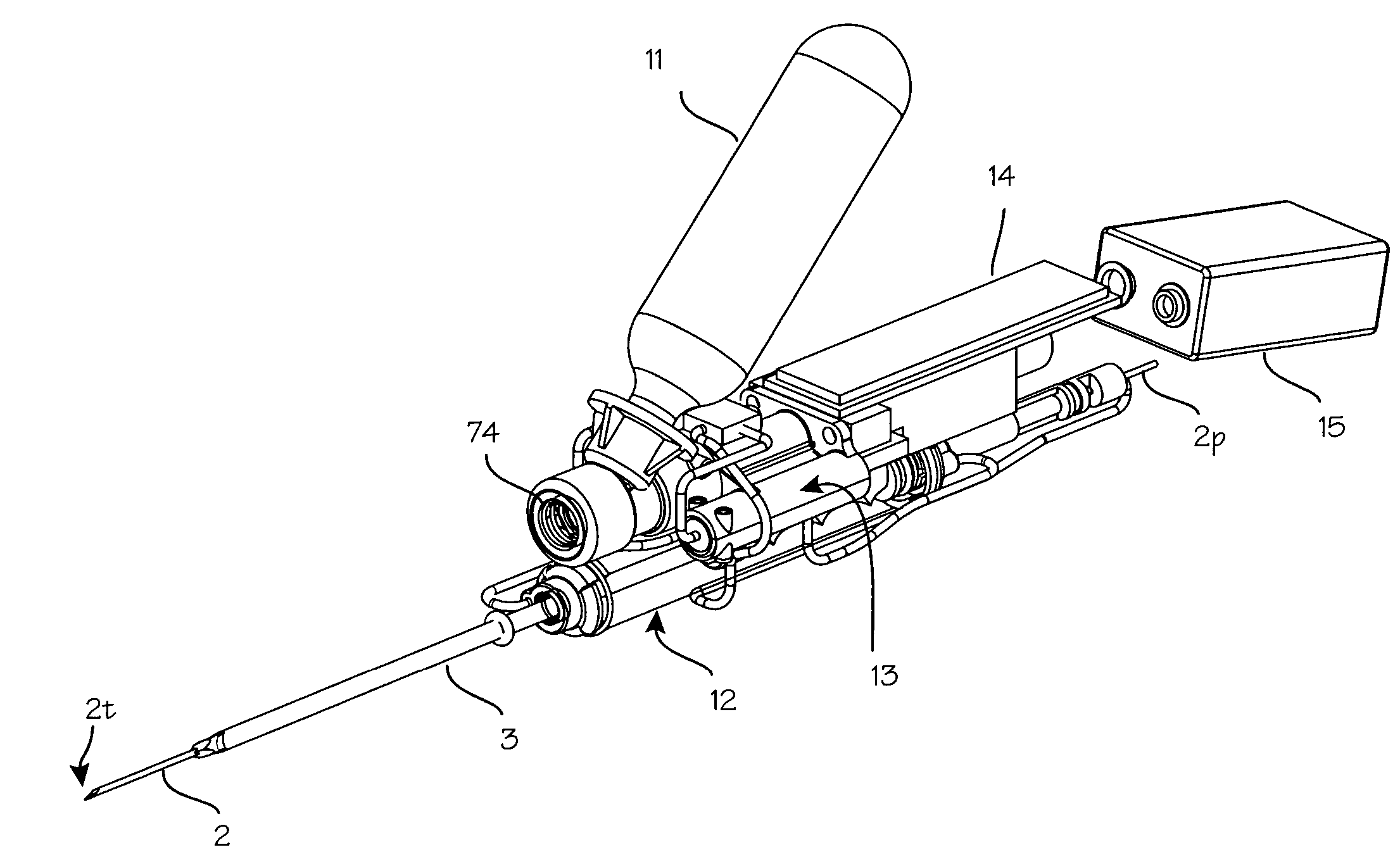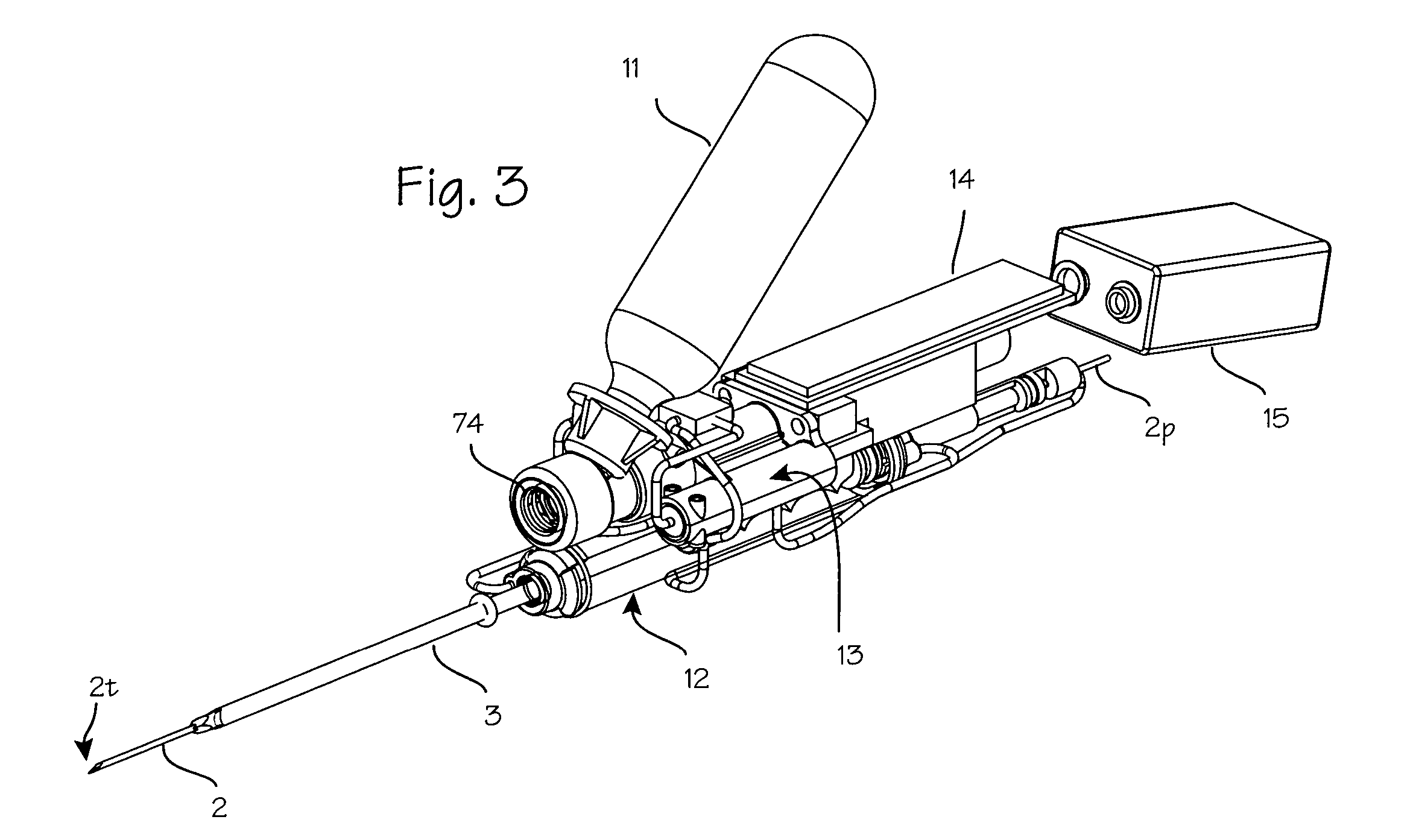Rotational core biopsy device with liquid cryogen adhesion probe
a cryogen adhesion and biopsy device technology, applied in medical science, surgical instruments for cooling, vaccination/ovulation diagnostics, etc., can solve the problems of difficult needle force into tumors, device is not designed for resection, and tumors are too tough to yield to suction and deformity, so as to facilitate rapid yet moderate freezing of target tissue lesion, prevent tumor cell destruction, and reduce seeding
- Summary
- Abstract
- Description
- Claims
- Application Information
AI Technical Summary
Benefits of technology
Problems solved by technology
Method used
Image
Examples
Embodiment Construction
[0018]FIG. 1 illustrates a biopsy instrument 1 which comprises an adhesion probe 2, a cutting cannula 3, and a housing 4 sized and shaped to form a convenient handle and also to house the components of the instrument. The housing further comprises a button interface 5, detailed in FIG. 2, which allows the user to control the device and which reports to the user the state of the device. The button interface comprises a sample button 6 which may be depressed by the user to initiate sampling operation of the device, a retract button 7 which may be depressed by the operator to initiate retraction of the cutting cannula after sampling, a ready light 8 which is operable by the device controller to indicate to the operator that the device is ready for use, a sample light 9 which is operable by the control system to indicate that the device is operating to core a biopsy sample from a patient, and an expended light 10 to indicate when the CO2 liquid has been expended. Membrane switches, or a...
PUM
 Login to View More
Login to View More Abstract
Description
Claims
Application Information
 Login to View More
Login to View More - R&D
- Intellectual Property
- Life Sciences
- Materials
- Tech Scout
- Unparalleled Data Quality
- Higher Quality Content
- 60% Fewer Hallucinations
Browse by: Latest US Patents, China's latest patents, Technical Efficacy Thesaurus, Application Domain, Technology Topic, Popular Technical Reports.
© 2025 PatSnap. All rights reserved.Legal|Privacy policy|Modern Slavery Act Transparency Statement|Sitemap|About US| Contact US: help@patsnap.com



